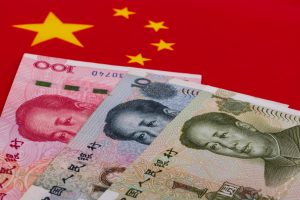The Diplomat author Mercy Kuo regularly engages subject-matter experts, policy practitioners, and strategic thinkers across the globe for their diverse insights into U.S. Asia policy. This conversation with Dr. Benjamin Tsai – Director of Analysis for Asia at TD International (TDI) and former U.S. government intelligence officer on Northeast Asia and the Middle East – is the 425th in “The Trans-Pacific View Insight Series.”
Identify key outcomes of China’s recent Third Plenum.
The Third Plenum officially endorsed “Chinese-style modernization” as the updated and “correct” interpretation of China’s “reform and opening up” policy, which started in 1978. “Chinese-style modernization” affirms the reformist legacy but redefines it to deemphasize the role of economic development in China’s modernization.
Xi Jinping’s predecessors Jiang Zemin and Hu Jintao followed Deng Xiaoping’s policy formulation of “economic development as the central task” (经济建设为中心), but under Xi this prioritization has been all but abandoned. The Third Plenum resolution did not refer to this phrase.
“Chinese-style modernization” posits that “spiritual civilization” (精神文明) is just as important as “material civilization” (物质文明). In PRC political parlance, “spiritual civilization” is code for political control and ideological fealty. In the 1980s, Deng and his allies proposed “economic development as the central task” largely in response to conservatives, who called for strengthening “spiritual civilization” to oppose economic reforms. Under Xi, “spiritual civilization” also means pride in China’s history and culture and rejection of Western liberal economics.
The Third Plenum commits to further reforms, but not necessarily market-based reforms.
Analyze Beijing’s political agenda behind the economic reforms.
Beijing again signaled that economic reforms must take place in the context of greater CCP control and Xi’s centrality in economic policy. This is not new, as we have seen this tendency develop in the past decade, particularly since 2018. Prior to the Plenum, some China watchers speculated that Beijing might reprioritize economic development, given China’s uneven post-COVID recovery. I do not see clear indications that this happened at the Plenum. The meeting resolution contained robust discussions of national security and risk management, which requires more political control and centralization.
Membership of the resolution drafting committee further suggests that politics was just as important as economics – if not more important. State media revealed that Xi headed the Plenum document drafting committee, with Politburo Standing Committee members Wang Huning, Cai Qi, and Ding Xuexiang as deputies. Out of the four, only Ding oversees economic issues. Premier Li Qiang, who ostensibly runs the economy, did not appear to have played a key role in drafting the Plenum resolution.
Explain the correlation between advancing science and technology (S&T) innovation and developing “new quality productive forces.”
S&T innovation leads to the development of “new quality productive forces,” which refer to strategic industries such as AI and advanced manufacturing and the personnel and knowhow associated with these sectors. The basic logic is that China needs to move up the “value chain” to focus on high-tech sectors, and to do so China must lead the world in S&T innovation.
How will the reforms impact the private sector and state-owned enterprises (SOEs)?
The Plenum document used a policy jargon – the Two Unswerving Supports ( 两个不动摇) – to show the Party’s simultaneous commitment to the public and private sectors. Under Xi, Beijing has shown a preference for statist economy policies, but the government understands that it needs to rely on the private sector for capital and innovation. Beijing is likely to make incremental reforms to improve the business environment for private companies in key sectors such as AI, electric vehicles, renewable energy, information technology, biotech, and advanced manufacturing.
Beijing will continue to push SOEs to expand internationally and become world leading companies. The government is likely to promote further reforms to consolidate SOEs and make them more efficient.
Assess the implications of Third Plenum reforms for multinational corporations and foreign investors.
It is not all bad news. On the one hand, the Plenum gave no indications that Beijing is moderating its industrial policy, which has caused tensions with the West. Xi’s remarks to Plenum delegates suggest that Beijing has concluded that the West will continue to restrict China’s access to technology, and as such China must work harder to achieve technological self-sufficiency. Xi stated that “international competition” is heating up and that China must control “core technologies.” Persistent tensions between China and the West will continue to create uncertainties for foreign businesses in China, especially in sensitive sectors.
On the other hand, the Plenum resolution outlined institutional reforms that, if implemented, could help drive growth in consumer spending and create opportunities for foreign businesses. Beijing promised to increase social and healthcare spending, as China’s government spending on social services as a percentage of GDP is much lower compared with OECD countries. Low government social spending has been one of the constraints on Chinese consumer spending because citizens must set aside significant savings for health, education, and retirement.
Experts estimate that further reforms in the household registration system by allowing migrant workers greater access to education, health, and welfare would increase consumer spending and accelerate urbanization. The government may allow more leeway in private and foreign investments in the healthcare sector, as China’s aging demographics increase demand for health services and products.
Although consumer spending remains sluggish, the sheer size of the Chinese consumer market presents opportunities for foreign investors. The consumer sector is generally not subject to restrictions that may apply to technology-related industries. U.S. consumer giants Starbucks, McDonalds, and Costco have all announced plans to increase their presence in China. One of my favorite burger chains, Five Guys, opened its first store in Shanghai in 2021 and now has several stores there.
Even with slower growth, China will remain the largest growth market for consumer products.

































